This is my first winter in Boston after coming back from Senegal. The sun sets at around 4:15 now, and it’s suddenly become extremely salient how hard it is for me to focus after dark.
I’d vaguely noticed this in the past, and dealt with it by shifting my sleep schedule earlier (or just being unproductive). But I’m waking up around 6:30 now and I already struggle to stay up for evening events. So finally, inspired by some blog posts, I decided to give up on chasing natural sunlight and make my own instead.
I bought an extremely bright “corn cob” style bulb. It emits as much light as about 40 incandescents, and produces enough waste heat that it needs an internal cooling fan to dissipate it. I put it next to my desk, in my peripheral vision (it’s somewhat uncomfortable to look at directly). According to my questionably-accurate iPhone light meter, its reflection off the curtains in front of me is brighter than the actual sunlight coming in from the outdoors (at 600 lux), and overall light levels in my interior went from 50 to 400 lux (“sunrise or sunset on a clear day”). (source).
Update 2020-11-16: For my home, I ended up switching from the corncob bulb to three 7-way splitters and 21 100W equivalent 5000K Cree bulbs from Home Depot. I found the Cree bulbs on sale so they were about the same price, the light was more diffused and they have a higher color-rendering index. There’s discussion of other alternatives in the comments.
The effect was huge: I became dramatically more productive between 3:30pm and whenever I turned off the light. Instead of having a strong urge to stop working whenever it got dark out, I was able to keep working my normal summer schedule, stopping just before dinner. I estimate the lamp bought me between half an hour and two hours a day, depending on how overcast it was.
To try to capture the difference, I used a manual camera app to take before and after photos of my desk with the same exposure and white balance. The phone camera doesn’t really capture the full effect since the dynamic range is so small, but hopefully it conveys a little bit of the amazingness:
Everyone who’s visited my house after I installed the bulb has remarked on how cheery our living room now is, some of them before noticing the light. My partner and several friends are buying their own.
For reference, here’s the stuff I bought (note that the bulb is on sale today):
The cheapest-per-lumen “corn bulb” I could find on Amazon,1 $100 for 30,000 lumens. Note that this one has a built-in cooling fan that runs decently loud (45db at 1m according to my questionably-accurate iPhone sound level meter).
These E26 to E39 adapters that will allow the bulb to be put in normal sockets.
I didn’t want to mess around with my existing fixtures, so I bought a basic fixture rated for 250 watts.
Notes:
The clamp on the fixture does nothing with this bulb because it’s too heavy—just take it off.
If you don’t want to turn the bulb off by unplugging it, consider an outlet switch like this one (I haven’t tried it personally).
Originally I stabilized the fixture by wedging it inside a piece of the lamp’s packing foam (see picture), but today I realized that I could rest the metal guard inside an empty 2lb yogurt container instead, which is better because it leaves room for the power cord to run.
if you want to put your bulb in an existing fixture/socket instead, make sure to check (a) that it will fit (it’s very large) and (b) that the socket is rated for 250w (many aren’t).
Why doesn’t everybody do this?!
All the blog posts were written by/about people who were described as having “crippling” seasonal depression. I’ve never been depressed, which is why it took me so long to give it a try (or even notice the correlation between light and productivity).
In retrospect, that was silly. “Seasonal affect disorder” makes it sound like it’s a discrete thing that you have or don’t, but probably everyone has noticed they’re more lethargic on cloudy days. A better model might be that seasonal depression is just the tail end of a curve in how people respond to light:
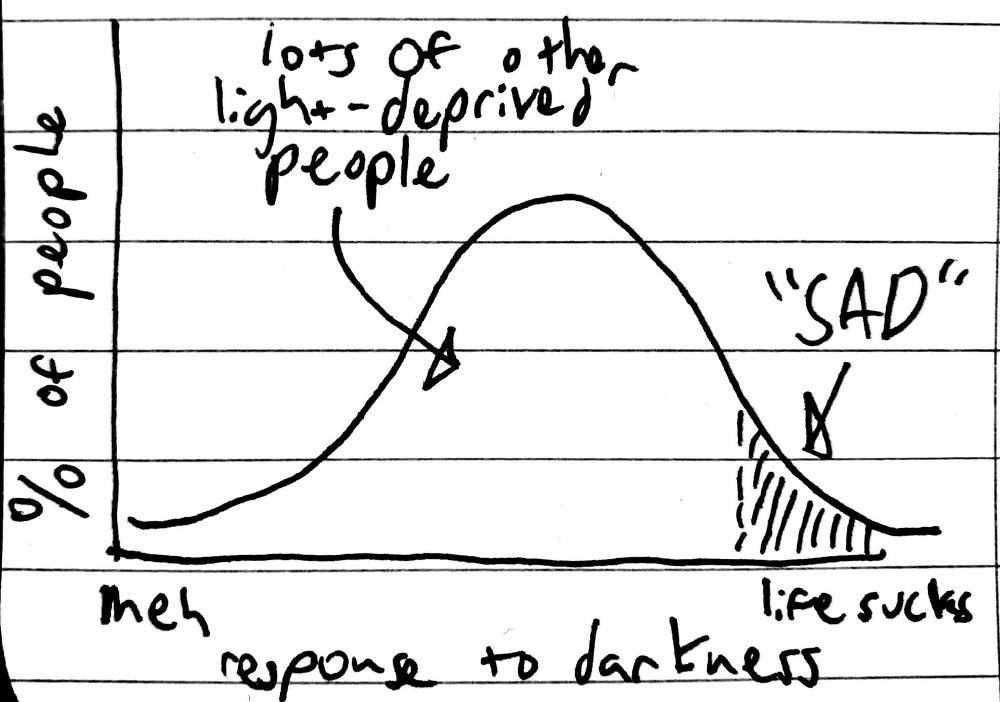
Typical indoor light levels run from 100-500 lux, which at the high end is about as bright as sunrise outdoors, and about 100x dimmer than daylight. Other than “we’ve been doing it for a while,” there seems to be no reason to expect that being in a 100x dimmer environment all day wouldn’t be awful. Indoor darkness seems to be one of those things that we don’t question only because it’s been that way forever.
Until recently, though, questioning it would have been somewhat academic, because it was too expensive to buy (and power) enough bulbs to do anything about it. My bulb is an LED bulb, for which cost per lumen has been falling about 20% per year for the last 50 years (source). LEDs only passed fluorescents in efficiency recently, but they’re still dropping fast. 10 years ago a bulb as bright as mine might have cost $1,000 instead of $100.
But as of recently, it’s totally practical to fill your entire house with light that’s as bright as full daylight. Ambient daylight in the shade is about 10k lux, or 10k lumens per square meter. For a 70 m2 apartment, that would be 700k lumens. The bulb I bought is $100 for 35k lumens, so $2k would buy sunlight for the entire apartment. (In another 10 years, if LEDs don’t hit physical limits, it’ll be $200!)
To close, some ultra-bright-lamp FAQs:
How is this different from “light therapy lamps”? Light therapy lamps are weak. They only give you a reasonable amount of light if you point them directly at your face from around a foot away. A high-power corn bulb makes your entire room much brighter, thus providing a much better simulation of daylight. See “You need more lumens.”
Isn’t this expensive to run? It draws about 2 kWh per day (assuming 8h of usage), which costs about $0.30 at typical rates. This is comparable to one day of a modern fridge or one load of laundry. Power is cheap, folks!
Isn’t using this much power bad for the planet? Coal has a carbon intensity of about 1 kg CO2e / kWh (source), so one coal-powered lamp-day produces 2 kg, approximately one-third to one-half of a cheeseburger (source).
Isn’t 5000K very “cold” light? “Cold” lights (above 2700k, the typical incandescent color temperature) have a bad reputation, but 5000K is actually less cold than the sun (which is about 5500-6500K), which clearly does not have a bad reputation. My totally non-validated theory is that people don’t like cold light because most cold lights (historically, mostly fluorescents) have much worse color rendering than incandescents: that is, they emit light only in discrete parts of the visible spectrum, which changes the relative appearance of colors and makes everything look weird. For instance, compare the two example spectra of a fluorescent vs. an incandescent:
Doesn’t it make it hard to sleep? Yup, bulbs this bright suppress my sleepiness dramatically (that’s partly the point!). I shut it off every day when I’m done working, usually at 6pm, about 3 hours before bedtime.
What are the downsides? The lamp flickers when other current-hungry appliances turn on,2 has a loud fan, looks ugly, is hard to set up a nice fixture for, doesn’t have an on/off switch (I just unplug it), and doesn’t make it easy to provide even illumination throughout a space. I’m working on building a DIY ultra-bright lighting setup that I expect to be way more effective on all these dimensions—stay tuned.
Update 2025-02-17: Unfortunately, the bulb I got is no longer sold and I haven’t personally tested any replacements—if you still want to replicate this setup, you’ll have to search on your own! ↩︎
One HN commenter points out that this may be a problem with my house’s electrical wiring. Thanks! ↩︎
Some links in this post are affiliate links; proceeds go to GiveWell.
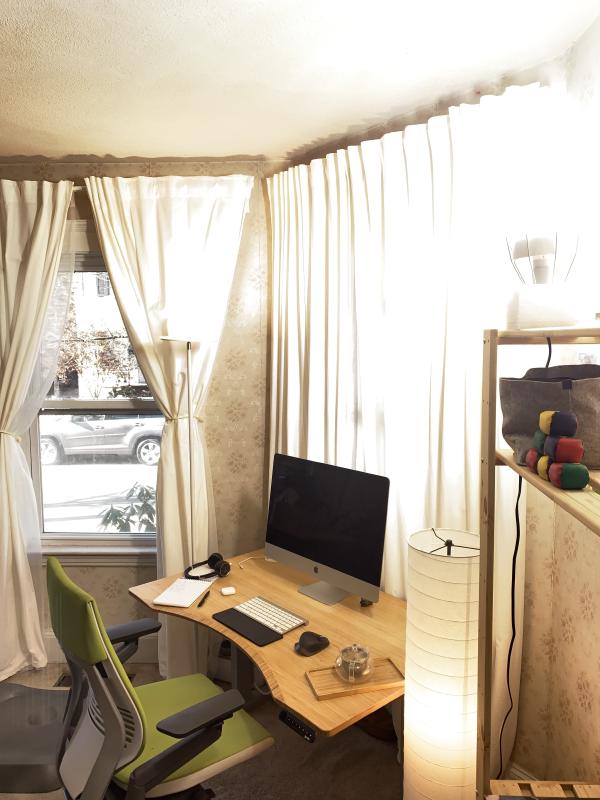
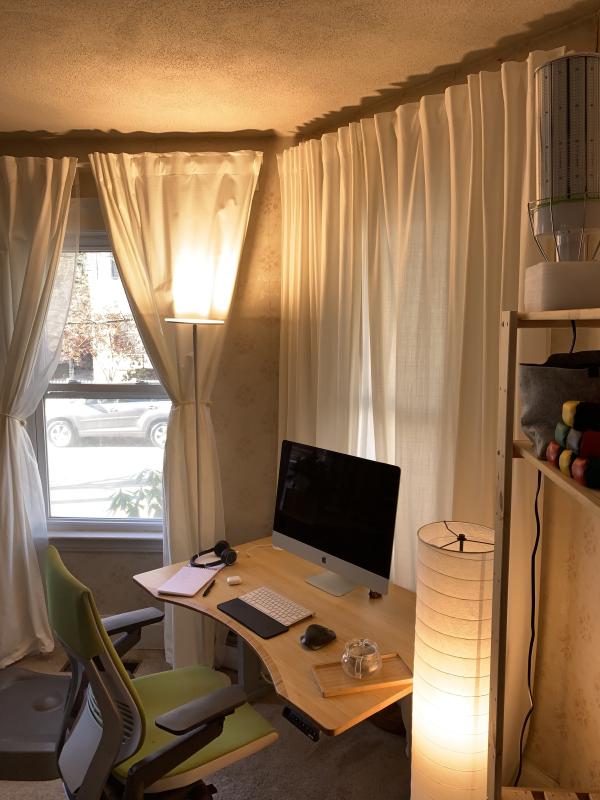
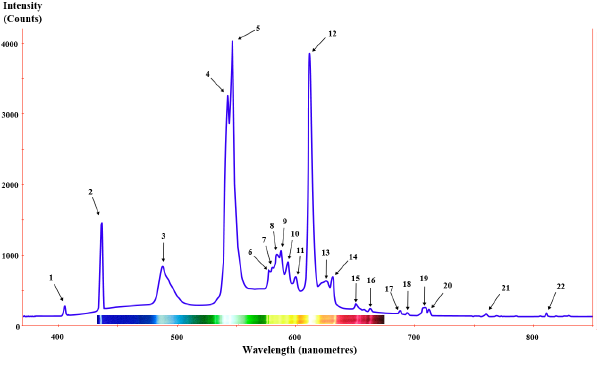
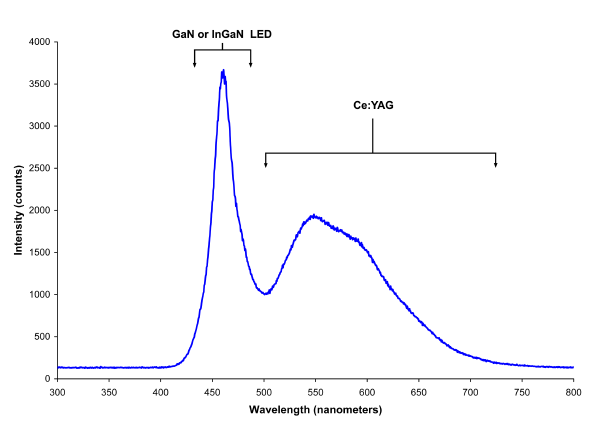
Comments
I found it fascinating how different your experience from me. For instance: “but probably everyone has noticed they’re more lethargic on cloudy days” - no, those are the days I feel super energised, full of possibility etc. Whereas really sunny days make me want to hide.
Similarly “there seems to be no reason to expect that being in a 100x dimmer environment all day wouldn’t be awful” - not for me. I pull my blinds down, wish I had better curtains, and even shut my internal doors to minimise the light leaking into my study. Anyway, I love that we are all different :)
Can confirm, this is me too. I love a dark room.
I’m much more productive in winter months. Work best at night. I use intense white light to wake myself up, but I prefer the evenings to be like siting by an open fire: red light, low down,
Great article but yes I’ll concur with this thread - I use Philips Hue and have most of the lights fairly dim, with a candle like hue throughout winter. Great atmosphere and makes me very creative.
Same here. I find the premise completely alien. I love working at night when the bright sun isn’t inviting me outside.
check out https://microsunlamps.com/how-a-microsun-works/ as I believe it is a very similar (better?) version
These look prettier, but are 1/5 as bright for twice the price.
“cold lights”: I think there’re two things going on here.
What is the CRI of the corn bulb? I noticed low-CRI LEDs are much more depressing than high-CRI lights. High CRI lights are virtually indistinguishable from sunlight.
It is allegedly 80 according to the product page–not that I particularly trust CRI measurements from random no-name Amazon sellers…
I do think a higher CRI bulb would be a pretty big improvement, but it seems to be hard to find the combination of high CRI, high temperature and lots of lumens. My coworker got excited by Yuji high bay lights but they are ~6x the cost per lumen of the bulb.
Now that the light has transitioned from “random experiment” to “expect to use forever” it’s probably going to be worth it for me though.
I’ve been playing with the concept of simulating daylight too. Repurposing the Fresnel lenses from old LCD screens allows you to create fake depth and a much more convincing daylight effect. Highly recommended for this type of project.
Very curious to hear your experience with this! I’ve been thinking about this on and off for the past few months - also came across Fresnel lenses as the potential solution so was going to try to get some
See also the worldwide “epidemic” of myopia, which may be caused by inadequate light during the day during childhood. Increasing artificial lighting in classrooms is a more realistic alternative to rebuilding all of them (see also this WSJ article to which I no longer have access).
250W for a light bulb is insane these days.
I live “a bit” further north, at 60 degrees.
By my experience, you do want a lot of lumen, but at the same time you do want to keep the light pleasant and soft, that means a large illuminating area. An example of such a light in action is a photography light box. To my knowledge you want a high lux, but rather low nit, that seems to be more important than excellent cri. One possibility is to point the high powered light to a (white) ceiling.
Has your ability to fall asleep, or sleep quality been impacted at all?
I always turn the light off when I’m done working, about 3h before bed usually. So far, that’s worked fine.
Could you add a graph of the spectrum of non-clouded sunlight?
Hi, there, I’ve tried your recipe this thanksgiving yet when the fixture arrived I found it was probably way too small for e39 core light bulb. How did you ever fix that into socket? (there’s noted e26 in its amazon item title)
Oh, crap–I must have used one of the adapters I bought and then forgotten about it. Sorry about that! I’ll edit the post to reflect it.
The link to the adapter seems to go to something called “JESLED Non Shunted LED Tombstones - (Pack of 50)”.
Huh, no idea how that happened, but should be fixed now–thanks for flagging!
Hi Ben, nice post.
I’ve spent a fair amount thinking about this and experimenting with different setups.
I prefer using (many) normal commercially available light bulbs. I think the light quality is likely to be higher, plus it gives you a bunch of flexible lights you can place where you want and move around the room. Placement is especially important because the amount of light that reaches your eye is proportional to the inverse square of the distance :).
My suggested setup comes out the same cost per lumen as yours. https://docs.google.com/spreadsheets/d/1WDsxhXzwSboOFqL7xorexY0kEb5fpLIv0ko0In87OT4/edit?usp=sharing
Always happy to chat more about this.
Yup, that’s another useful approach!
I think the main advantage of the corn bulb is easier setup (and placement, like you mention, actually–it’s easy to put the entire corn bulb 5’ from my face, and would be harder with a large mass of A19s.)
If I were doing this with bulbs, especially if I were looking for higher quality light, I’d try to find ones with a higher CRI (“color rendering index”) than the ones you listed, which are not rated substantially higher than the corn bulb. Home Depot sells many Cree bulbs sporting 90+ CRI; these are noticeably cheap but require more sockets.
Speaking of sockets, looks like these string lights achieve a total wiring cost of about $1.21 per bulb, vs $4.20 per bulb in your spreadsheet, which should drive the cost down a lot at the cost of even more diffuse light.
Do you know if it’s possible to use dimmable bulbs in a normal socket, and get the maximum brightness the bulb is advertised for?
Also, Staticman looks cool!
I’ve never verified this, but I’m pretty sure it is possible–I think “dimmable” bulbs are designed to work with dimmer switches that produce normal AC power when the dimmer is at 100%. (I currently have some dimmable bulbs in non-dimming switches, and they do not look noticeably underpowered.)
https://www.benkuhn.net/img/lux/sad.jpg
Is this created with remarkable tablet? Just wondering.
I contacted the referenced bulb manufacturer via Amazon and they are working on making a frosted cover for this bulb that should make the light more pleasant.
They said they should have it ready in about a week.
Wow, fast turnaround! So you contacted the “GE RUN” seller?
Thanks for this post, Ben. Any ideas on how to somewhat shade the light bulb as it’s hard on the eyes in plain view?
Hey Ben,
Thank you for this thorough blog post. I bought everything that you did and it’s on the way. However, I just saw a 26K lumen bulb that’s on sale for $10: https://www.amazon.com/dp/B07L6C6RP5/ref=cm_sw_r_cp_api_i_Fn-6DbN1A9XFK
My question is fundamentally about safety. How do I judge that bulb from a safety standpoint? It seems like a better deal but it, and the bulb you recommend as well, is seemingly sold by a random Chinese company. Is there any concern, especially given the relatively high wattage of these giant lightbulbs? Furthermore, is there any profoundly incorrect usage that you would warn against? For example, I plan on plugging the bulb into a smart outlet which is in turn plugged into a wall outlet, and I don’t know if that extra layer would pose a hazard for whatever reason. I just don’t want to start a fire. Thanks in advance.
That specific listing on Amazon looks like a pricing mistake…
Just to follow up. The light bulb manufacturer that was referenced in this post created and sent me the corncob bulb with a cream cover instead of clear. The bulb is just as bright but not as intense. It is pleasant to look at. A link to the picture they sent me when they devoloped it is here: https://imgur.com/gallery/NX8WskG . After trying it out I strongly encouraged them to sell this style on Amazon as well. I’m really impressed with the amazing customer service this company has shown so far.
About the “cold” light statement: I think this can be better explained by the Kruithof curve rather than CRI.
Ooh, thanks for the link, that makes a ton of sense! Will update the article :)
Thought you might find this interesting: https://www.youtube.com/watch?v=XVV_-aB1jpg They replicate natural light so perfectly people can’t tell the difference. The company is called Innerscene
For any recent readers, I ended up switching from the corncob bulb to three 7-way splitters and 21 100W equivalent 5000K Cree bulbs from Home Depot. I found the Cree bulbs on sale so they were approximately equally cost effective, the light was more diffused and they have a higher color-rendering index.
Thanks for the update! I just ordered. Going to use that in another part of the house.
Thanks for the update Ben. Can you supply a picture of your new lighting rig? Also, are the bulbs still dimmable with the 7-way splitters? I got the corncob and I love it but I also wish it was more diffuse. Your new setup almost warrants another article.
I installed them in my recessed lighting and yes they are still dimmable with the 7 way splitters. I too would love to see Ben’s new setup.
Some of the reviews on 7-way splitters, including the one Ben linked, are concerning…I wouldn’t risk a house fire. The corn bulb has been working perfectly for me - I hope it is safe. I have kept it in the same wire cage and foam base that Ben suggested. For the most part I have felt that it is safe, but the setup isn’t sturdy and when the bulb falls over it really heats up on the side facing my carpet. I’m open to suggestions for a more premium base.
I would also appreciate it if anyone can weigh in on the overall safety of using cob bulbs on the ground indoors as opposed to the ceiling in a commercial setting. This thing has been a real boon, but it would be great to be reassured as to its safety.
Lastly, if cost wasn’t as much of a constraint, and someone was willing to spend $300-500 for the same amount of lumens, is there something better out there that is less jarring/janky for consumer use? (dimmable/more attractive/more diffuse/adjustable/no fan). It doesn’t have to be a singular device. For example, I’m fine with putting a light fixture in each corner of my room.
I know that’s a lot of questions, but we’re in unexplored territory folks. I don’t know anyone playing with commercial-grade light in the household. It should be more popular! Reading this blog was the single highest return blog ever for me, and it’s not even close. I’m talking exponentially better. Major kudos to Ben.
Now I’m looking at buying 3-4 of the Viltrox VL-D85T photography light: https://www.bhphotovideo.com/c/product/1459194-REG/viltrox_vl_d85t_vld85t_professional_photography_led.html?ap=y&smp=y
It is high CRI, dimmable, more diffuse (panel light), has adjustable color temperature, can be used closer to you (especially as a wakeup light), and seems more practical for multi-hour usage.
Specs: http://viltrox.com/en/index.php?m=index&a=show&cid=153&id=189
This looks promising but I’m still open to recommendations.
Hi John, I’m curious to hear where you’ve landed. I’m hoping to find something relatively “normal” looking, just REALLY BRIGHT – so I’m fishing through Ikea and West Elm floor lamp fixtures to try to find one that can fit the dimensions (and voltage) of a midrange corn bulb, like this 120W, 4000K, 17,000 lumens bulb: https://www.prolighting.com/brands/sylvania/sylvania-led-corn-cob/syl-40722.html
Would love to hear about your progress.
Hey Aaron, I think I’m settled on the photography lights that I linked above. I would start with one, and put it right next to my bed. Because of the proximity and directness of the light (compared to the cob bulb), I might not need as many total lumens. If I do, I can just scale up and buy a couple more. It’s not a critical purchase right now since I have the cob bulb so I won’t have an update on that for a while.
The problem with the cob bulbs, other than the considerations I mentioned above, is that they evoke a sense of danger to other people in the household. Even if you are completely assured of the bulb’s safety and you never stare at it, others are still going to be wary of this device that is 30-40x brighter than a lightbulb and is meant for warehouse settings. This might not hold true for a bulb that is “merely” 20x brighter, like the one that you mentioned, but it may. Let me know if you get it though. I would certainly prefer 2 of those to 1 bulb with double the brightness.
Hi! Just to update on what I’ve done in my home office, which is on the first floor and has been starting to feel dim in the late fall:
A “merely” 80W corn bulb – (I got a 4000K, and will now also get a 3000K): https://www.amazon.com/gp/product/B07Z1VSH19/
And this simple but pleasant fixture: https://www.amazon.com/gp/product/B011XV53HO/
Along with the E26 to E39 adapter that Ben mentioned: https://www.amazon.com/gp/product/B01DW260Y2/
I had to do a tiny bit of surgery on the fixture so that the wire would fit around the bulb – just snipping it and extending with a bit of stiff wire (you could probably use a wire clothes hanger), binding it back together with electrical tape.
This is what it looks like: https://imgur.com/a/tNUAZ9o
So far I’m extremely happy with it, and am now ordering a second fixture and a second bulb – this time 3000K, for a little warmer feel. It’s not the absolute brightest possible setup, but it is less unpleasantly “naked” than Ben’s original setup. I feel pretty good about the safety – though I’m running an 80W bulb in a fixture that says its max is 75W, and I will keep an eye on the temperature, since it’s a wide bulb in a tube fixture. There’s a good 3 or 4 inches clearance from the bulb to the shade.
Hope this helps somebody!
John, would love your report on the photography light – sounds like you’re going for a “blast me out of the darkness of sleep into daytime” effect, which those lights look great for.
Is the 7 way splitter for putting in 4 different sockets in your ceiling, or did you make a giant lamp out of it? Im trying to figure out how to make a high cri or full spectrum lamp that is about as bright as 30k+ lumens. Since all those morning bright light lamps for 10k lux only have that at like 6 inches away.
John, did you try the hi-brightness panel? I wonder if it’s so bright that the large area only creates a larger visual region that my eyes must avoid.
May be better to tile the ceiling with “normal-strength” panels. Or suspend a corn-cob bulb from the ceiling, with a foil-lined umbrella right below.
Have you tried using this type of light for the waking up cue you mention here: https://www.benkuhn.net/zero/ ?
They are way too bright (and non-dimmable) for that! Someone turned one on while I was sleeping once and it was actually pretty scary.
Wow, now you got me scared! I was imagining it would be like waking up with the sun on your face, given its brightness (and plus some noise lol). But from what you describe it seems much more intense than that. Maybe that’s a consequence of the (unnatural) abruptness of it turning on?
Yes, it’s about the abrupt transition. If they were dimmable it would probably be fine.
Peter, I am a former night owl and I have been using this setup in combination with the Kasa smart plug. It has been utterly life changing. I set the wakeup time the night before. Sometimes I set it as early as 4:30. It wakes me up instantly. I sit in bed for 5-10 minutes while I let the light increase my wakefulness and anchor my circadian rhythm.
I am now suspicious of sleep chronotypes. I’m sure they exist, but clearly our circadian rhythm is EXTREMELY pliable. The key is bringing the sun indoors, which would have been laughably impractical before consumer LEDs came about. Let me know if you have any questions.
The meaningness.com article in your post had a small update; it now links to another article about an alternative lighting solution, LED light bars.
Nice Blog! I was wondering if you had an idea which light to use, maybe even to DIY that gives off enough light to turn night into day in my room against winter depression. I read a lot about safety risks, such as wrong frequencies (UV). So I would like to be sure I’m not creating a permanent health problem while trying to fix a detrimental permanent one. Any ideas? (the cheaper the better, value wins)
I’ve never heard of corn light bulbs before, but I’m going to give it a try! I’m always sleepy in my work-from-home office with the poor lighting that’s in there now.
test
I’m curious - is anyone using bright LED strips to achieve a very bright illumination?
It looks like corn bulbs have gotten cheaper since 2020, and many are now fanless: https://dragonlightstore.com/
This page is not usable on phone
The URL is broken to the “The cheapest-per-lumen “corn bulb” I could find on Amazon”.
Which product was it? I suggest to include the product names in the blog posts to avoid problems with broken links, yet maintain provenance :)
Unfortunately, it looks like the bulb I got is no longer sold and I haven’t personally tested any replacements—if you still want to replicate this setup, you’ll have to search on your own!
Ben are you using any new bulbs for this setup? Any other updates?